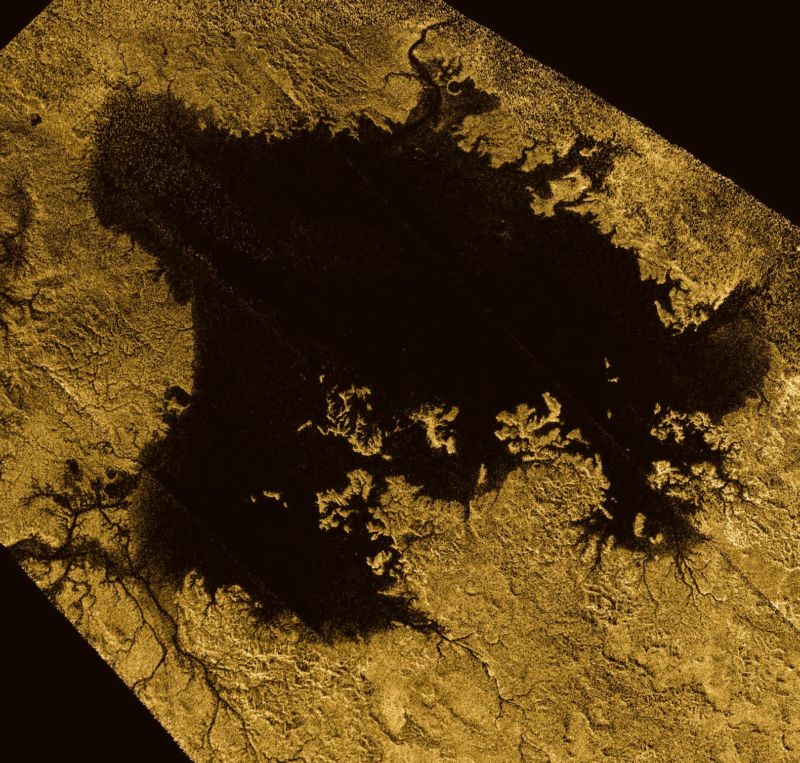Surf’s up on Titan? Shorelines on Saturn’s moon suggest wave action.

Enlarge / Ligeia Mare, the second-largest body of liquid hydrocarbons on Titan. (credit: NASA/JPL-Caltech/ASI/Cornell)
During its T85 Titan flyby on July 24, 2012, the Cassini spacecraft registered an unexpectedly bright reflection on the surface of the lake Kivu Lacus. Its Visual and Infrared Mapping Spectrometer (VIMS) data was interpreted as a roughness on the methane-ethane lake, which could have been a sign of mudflats, surfacing bubbles, or waves.
“Our landscape evolution models show that the shorelines on Titan are most consistent with Earth lakes that have been eroded by waves,” says Rose Palermo, a coastal geomorphologist at St. Petersburg Coastal and Marine Science Center, who led the study investigating signatures of wave erosion on Titan. The evidence of waves is still inconclusive, but future crewed missions to Titan should probably pack some surfboards just in case.
Troubled seas
While waves have been considered the most plausible explanation for reflections visible in Cassini’s VIMS imagery for quite some time, other studies aimed specifically at confirming their presence found no wave activity at all. “Other observations show that the liquid surfaces have been very still in the past, very flat,” Palermo says. “A possible explanation for this is at the time we were observing Titan, the winds were pretty low, so there weren’t many waves at that time. To confirm waves, we would need to have better resolution data,” she adds.




